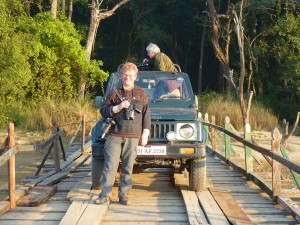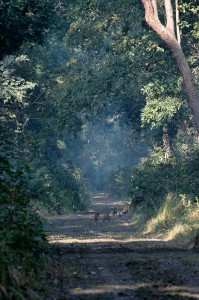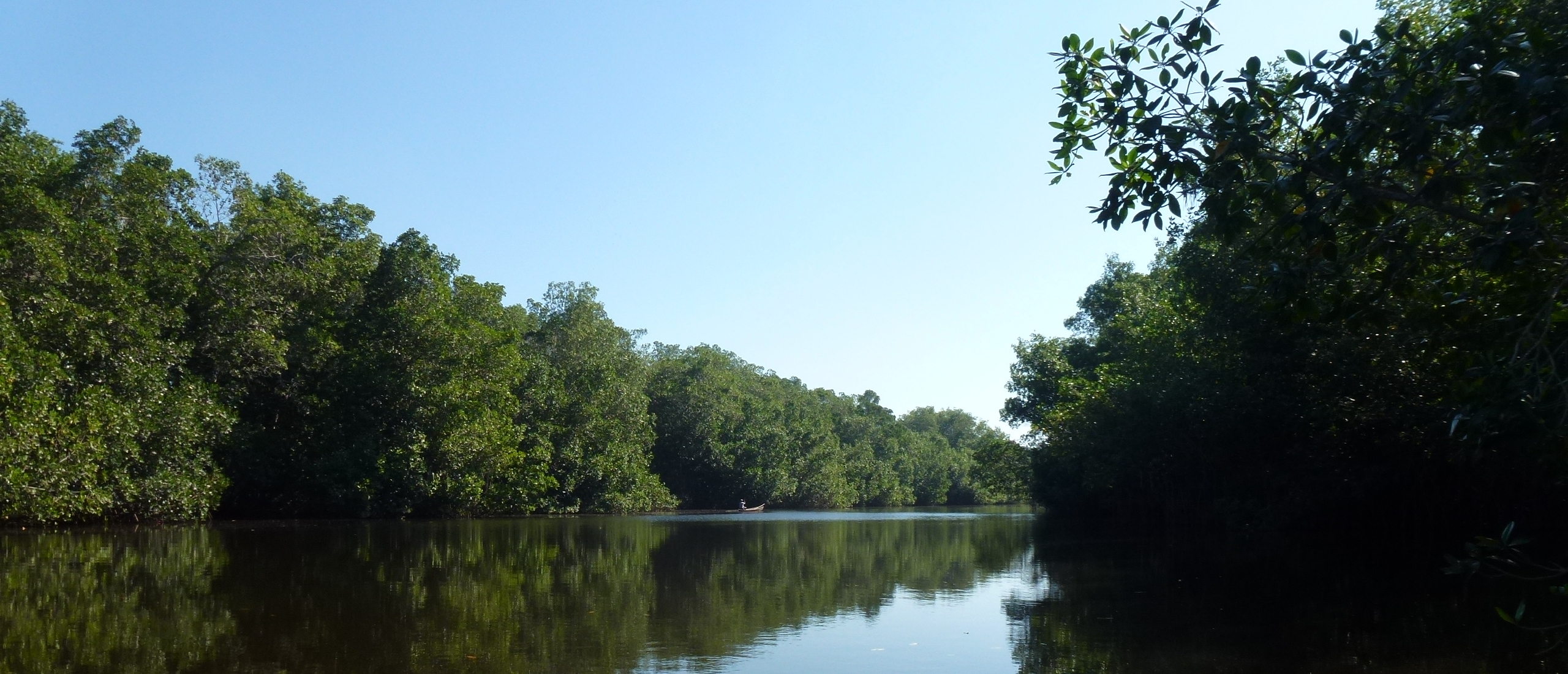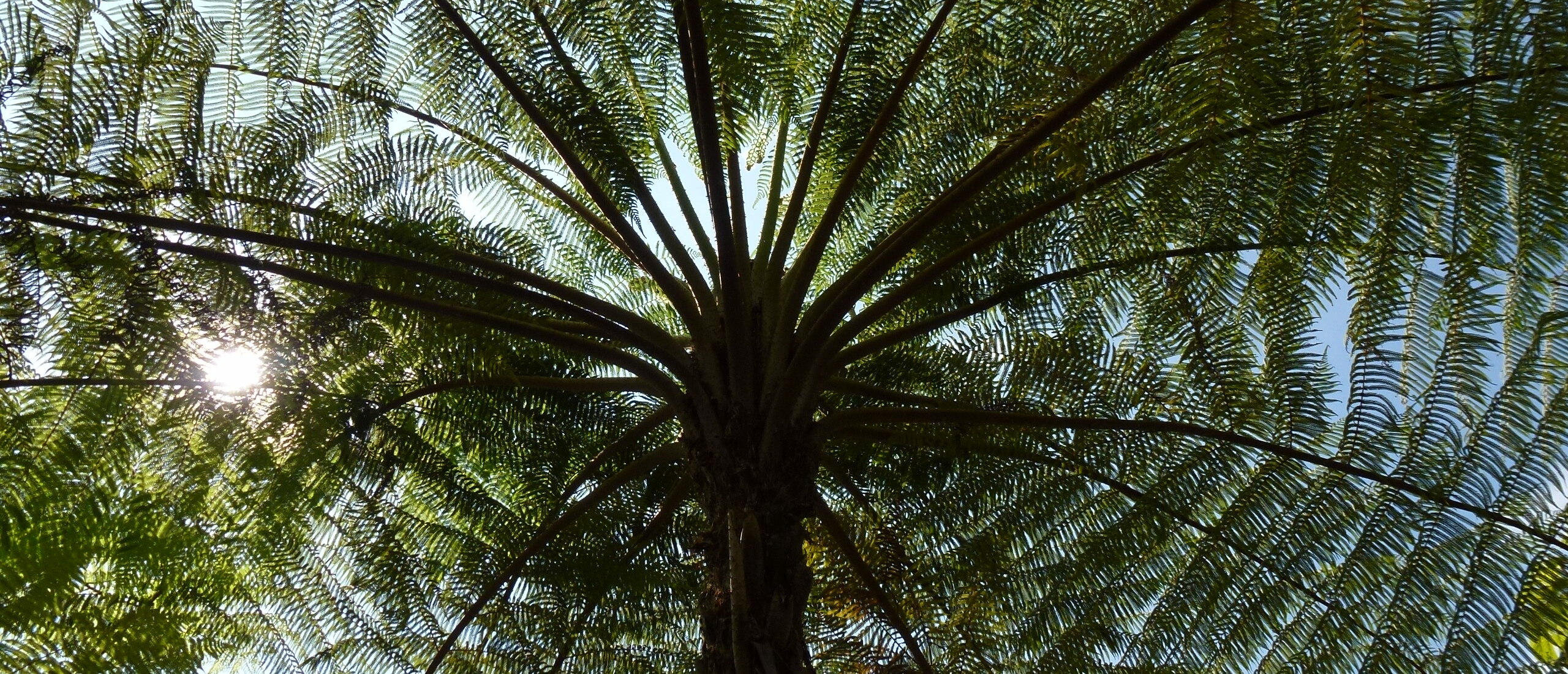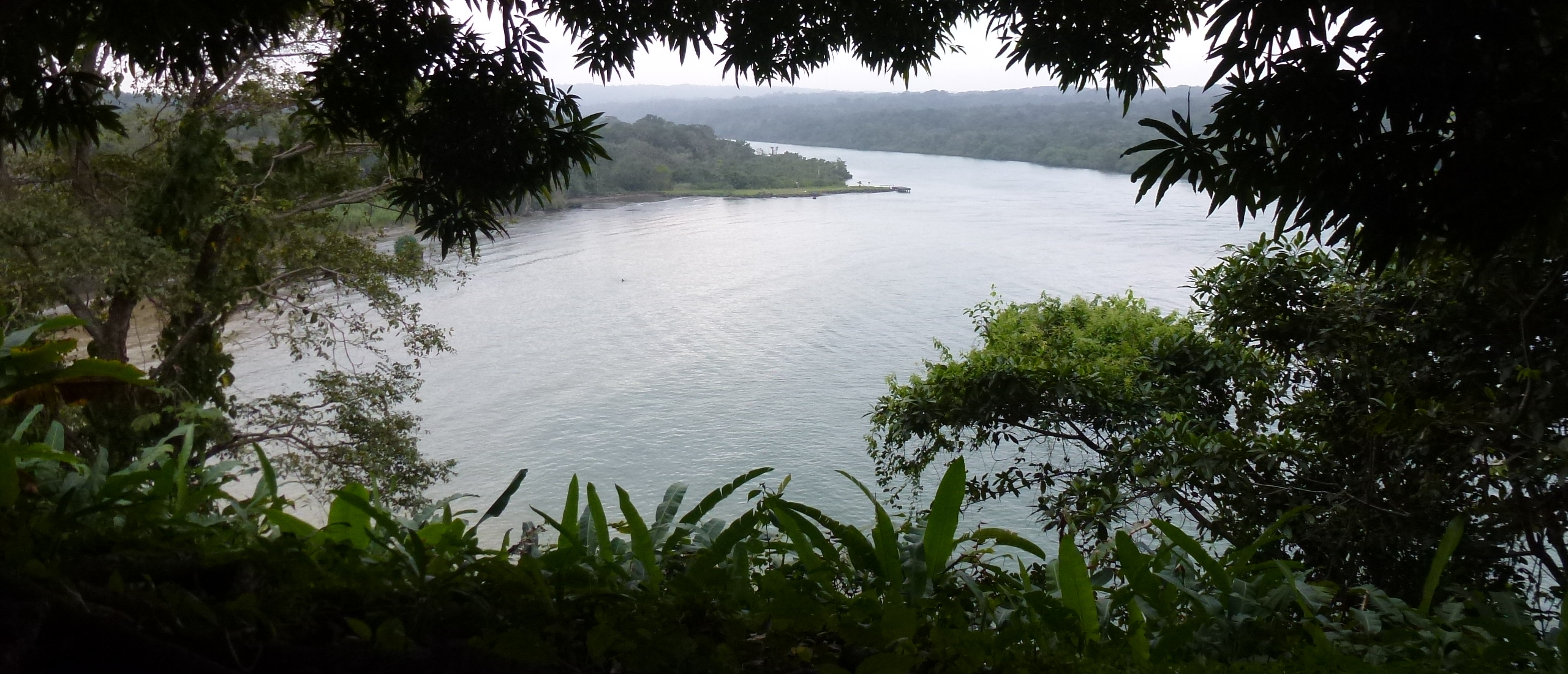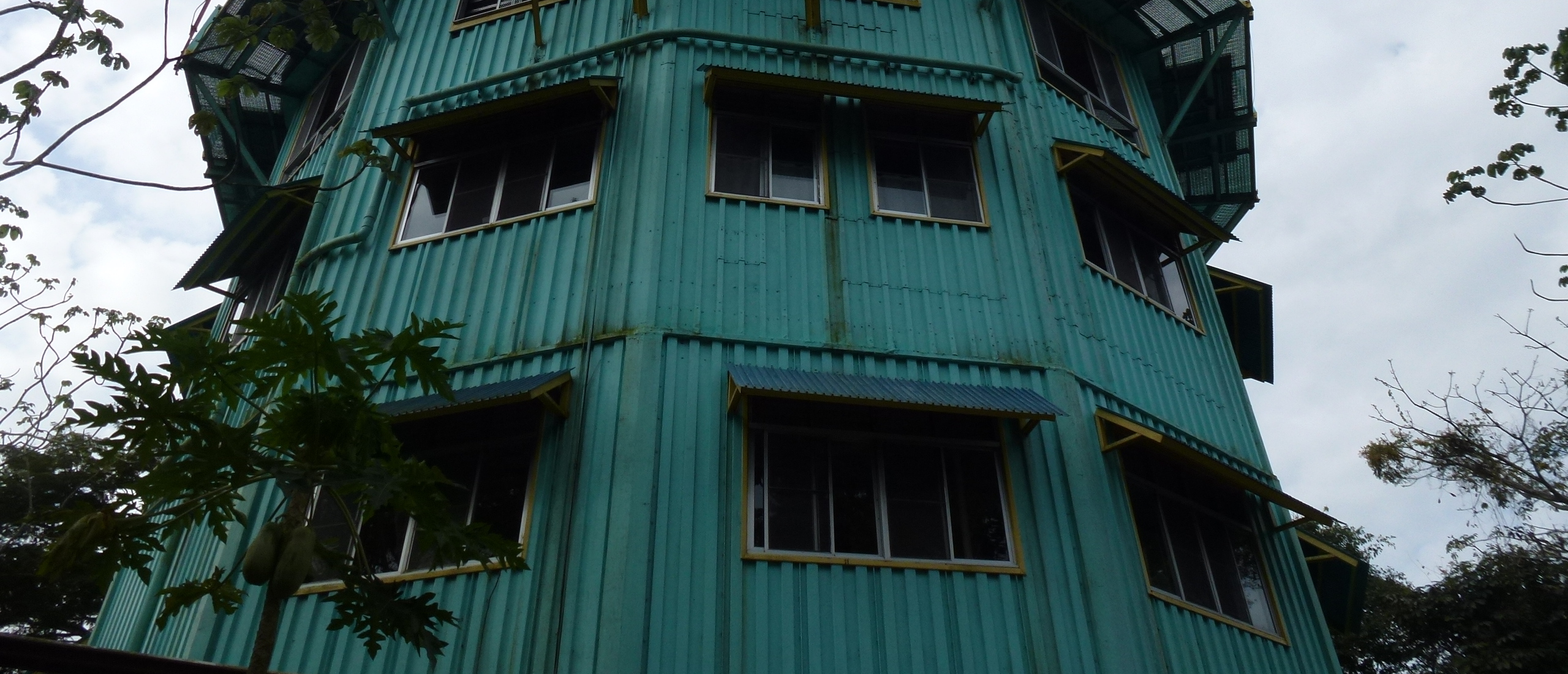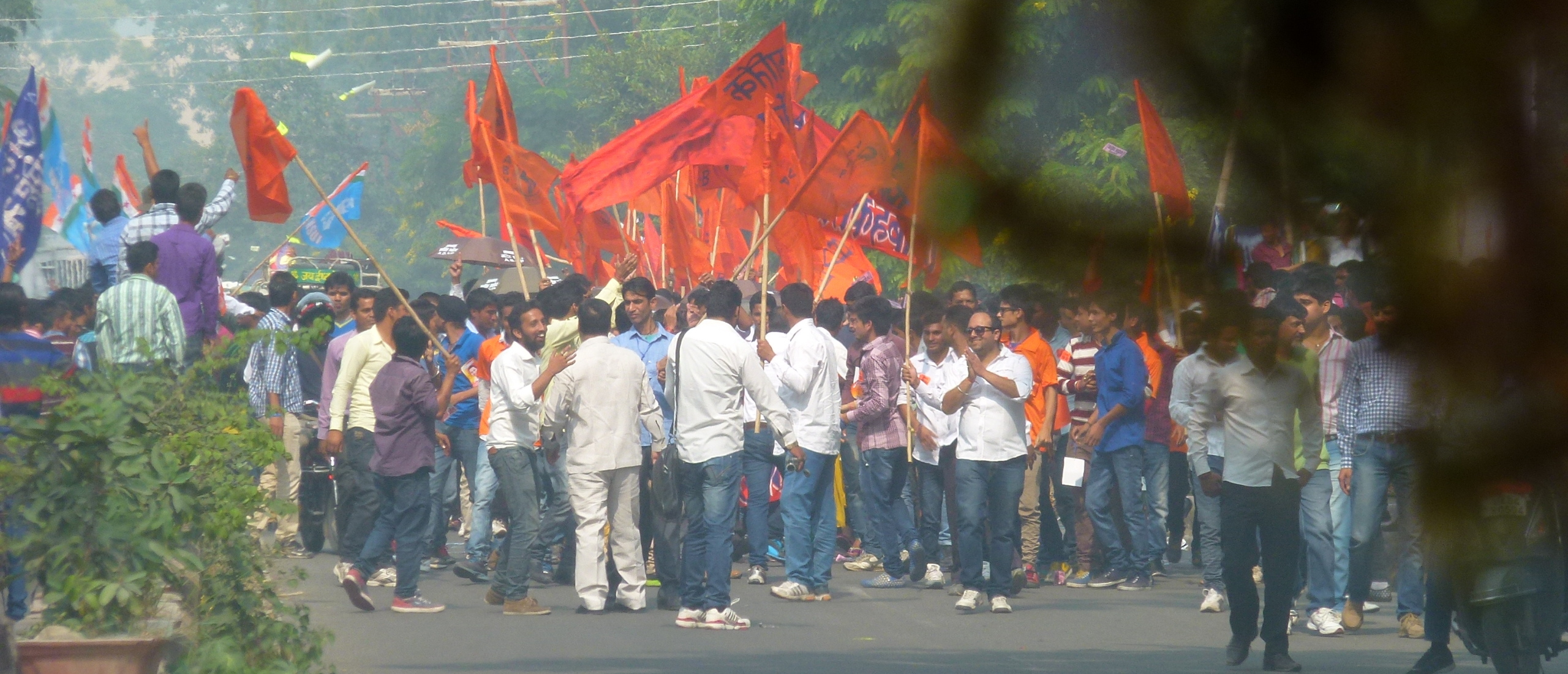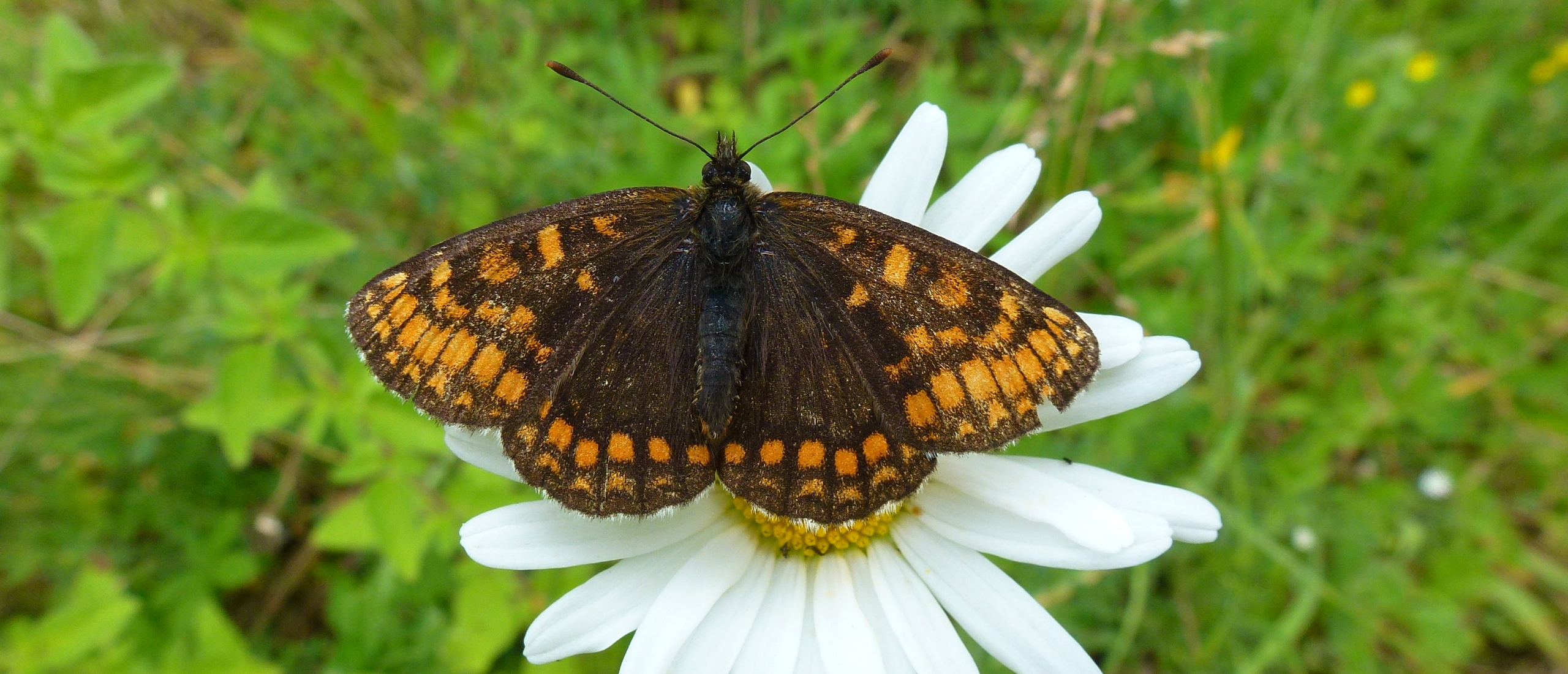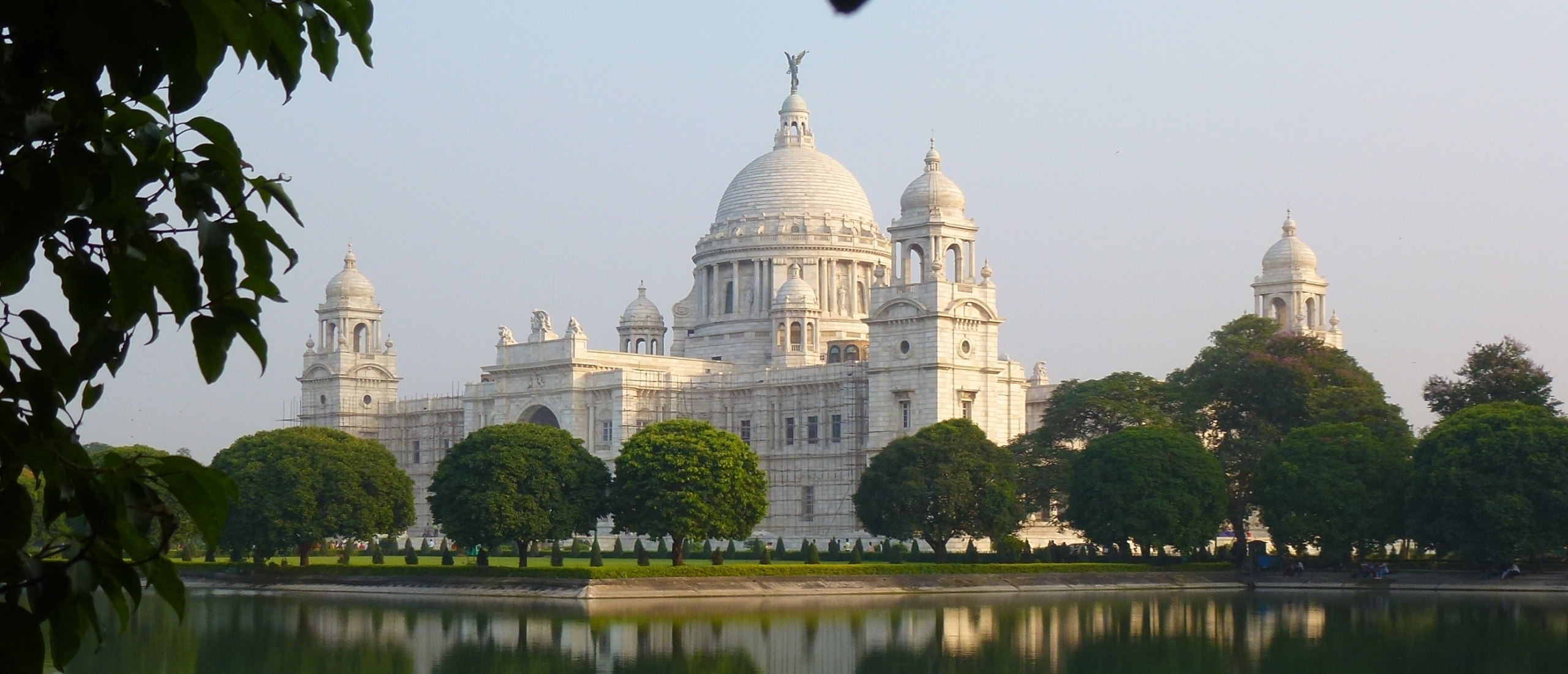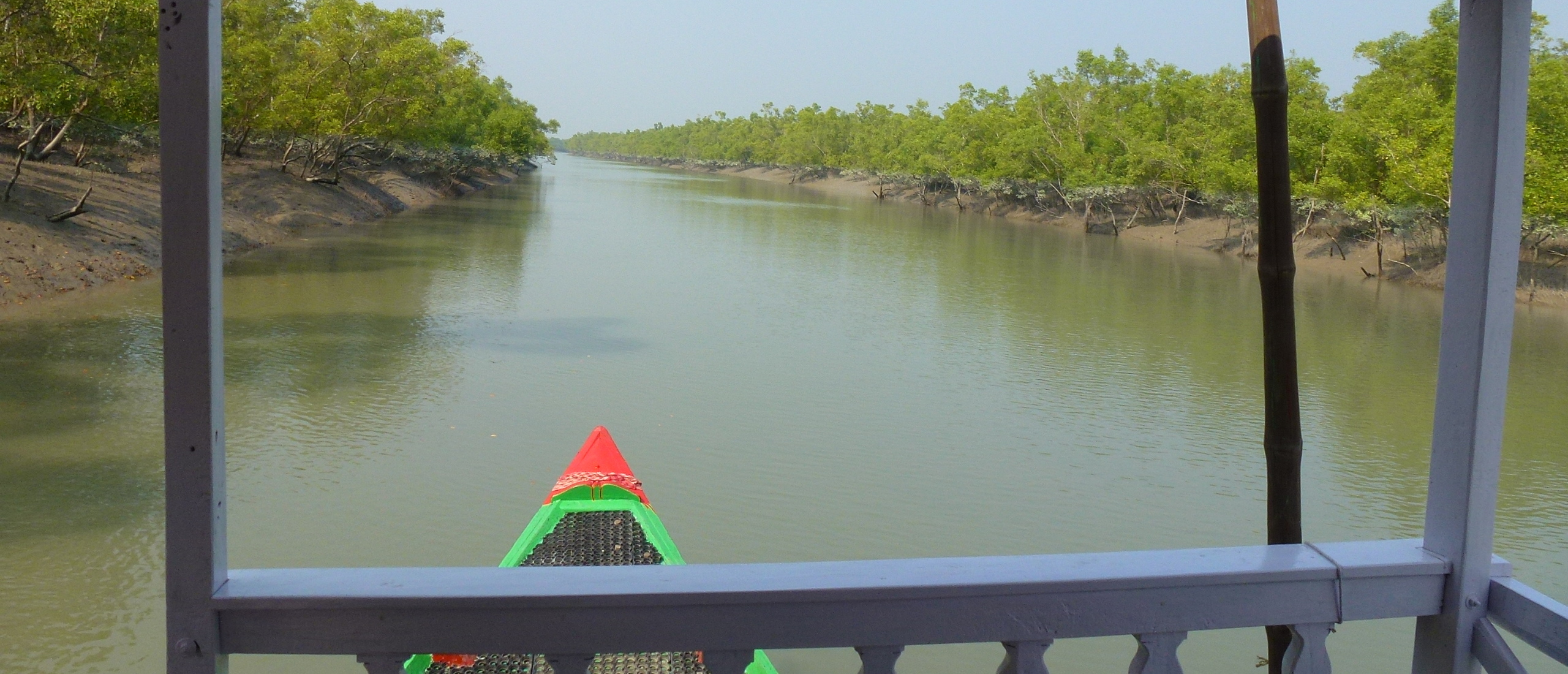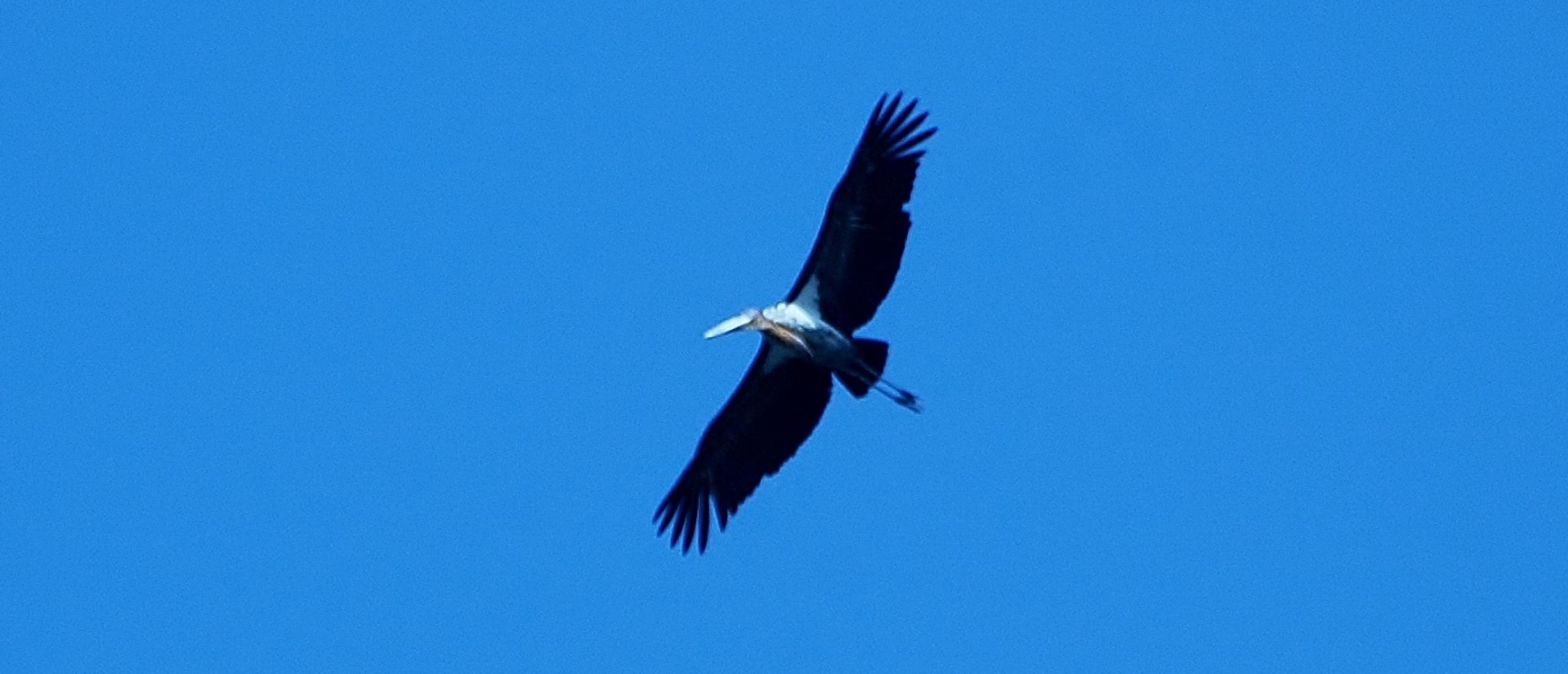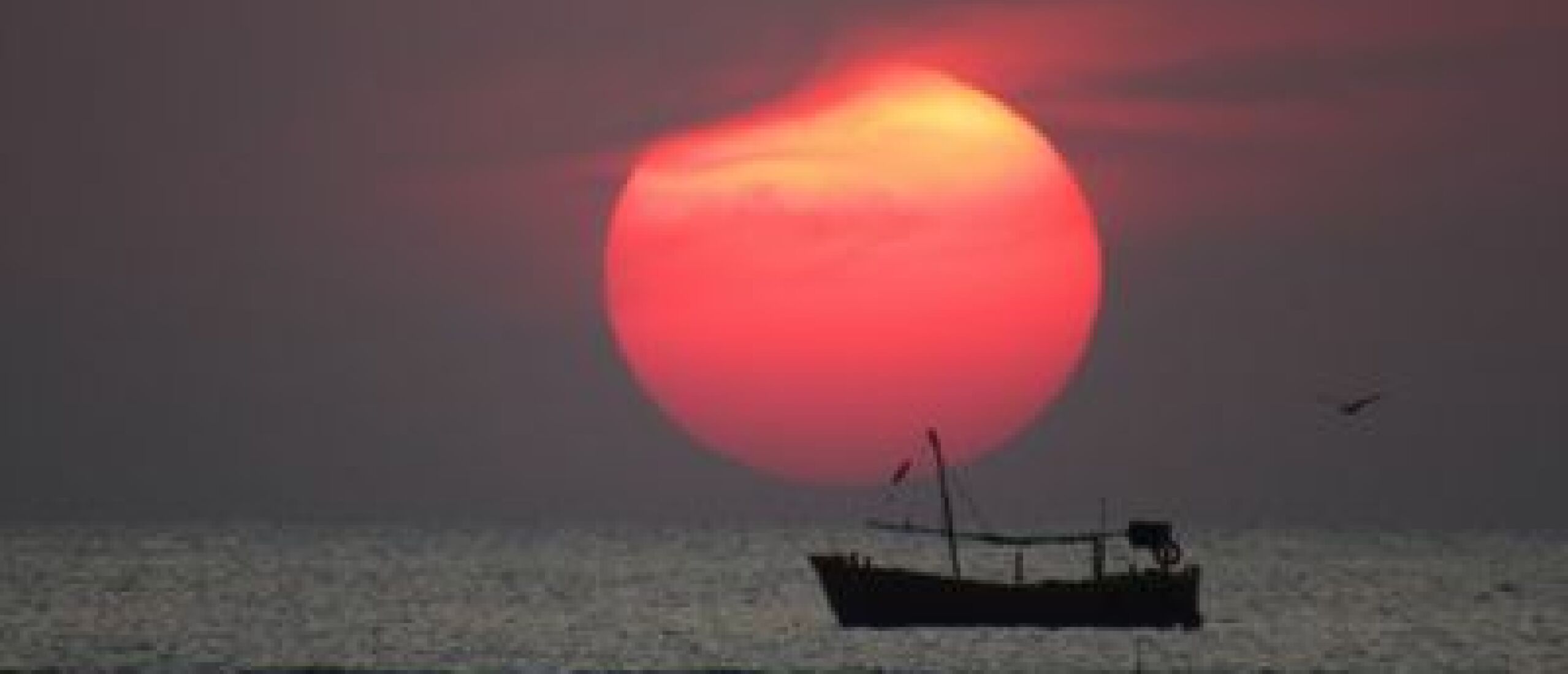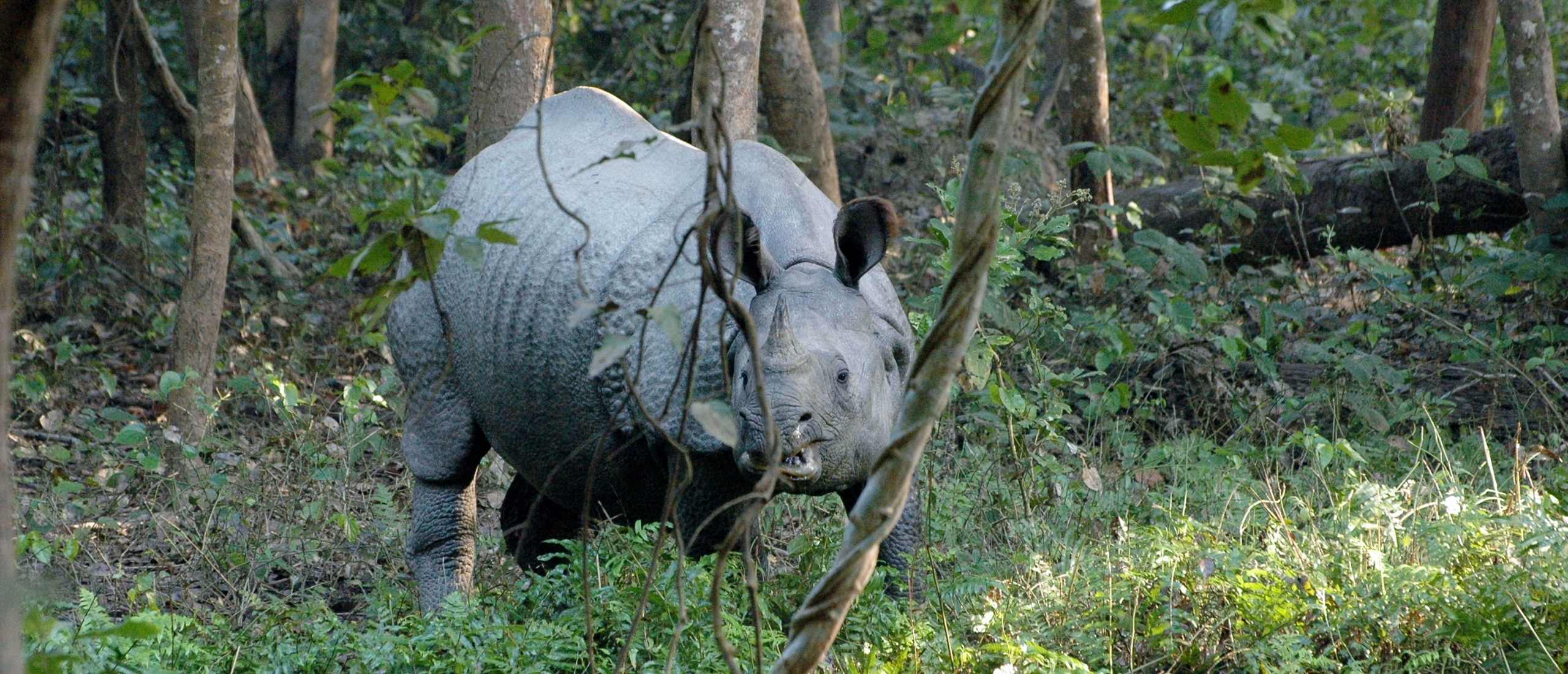
Mam is VERY lively! Following our return to Calcutta at the end of our Sunderbans mangrove experience, it was time to say our farewells to our Naturetrek companions – it is amazing how these wildlife tours can bring a group of totally unconnected people together, forging a strong bond, with private jokes and amusing banter that would only hold any meaning at all to the participants, but which can build up into a real team spirit in only a few days. We knew we would miss the fun once we had returned to our solitary travels, but all too soon the taxi that was to take us from the Hyatt to the Fairlawn Hotel in downtown Calcutta arrived, and we were on the road again. The Fairlawn is an extraordinary Calcutta institution. Originally a private residence, it is filled with memorabilia of its erstwhile owner, with photographs covering every available space, and a real family atmosphere – not that we had much time to appreciate it. Our programme had provided for an evening visit to the sound and light show at the Victoria Memorial by night, which we both enjoyed, and were impressed by the unbiased commentary on the founding of the city by the East India Company merchants in the 18th Century, of the opulence of the lives of some of these self-made millionaires and of their Indian counterparts, of the flowering of culture and the arts in the city, of its role in the Independence campaigns, and of its place in modern India. The following day too was taken up with visits to historical sites, including the Prinsep Ghat Memorial, Man O’ War Jetty and the Botanical Gardens, which we reached by crossing over the renowned Howrah Bridge, which apparently sees more people passing over it each day than any other bridge in the world. The highlight of the Botanics was undoubtedly the enormous Banyan tree, of which the original trunk has rotted away, but the branches are now held up by countless aerial roots, covering a vast area of approximately 1.5 hectares. Some jokes were made by our guide about both Rosemary and the Banyan tree being relics of the Raj, but I shall comment no further on that!
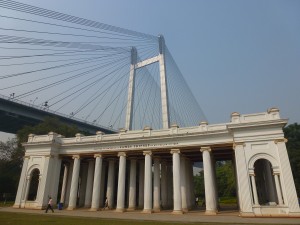 The Prinsep Memorial, dwarfed by the new suspension bridge
The Prinsep Memorial, dwarfed by the new suspension bridge
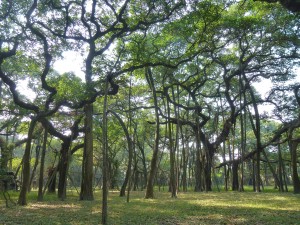 All these trunks make up the enormous banyan tree
All these trunks make up the enormous banyan tree
That evening we were due to catch an overnight train for the lengthy journey to Kanpur, but shortly after arriving at the almost unbelievably busy Howrah railway station, we found that our train had been rescheduled from the original time of 19.15 to 21.05. Luckily, both our driver and guide kindly volunteered to remain with us, and in fact we were able to stay in the car, because in this station, almost uniquely, there is road access parallel with every platform. This was an enormous help, as the platform became steadily busier as the time wore on, with people milling around and becoming somewhat unruly – at one point, Railway Police moved in with batons to reclaim control of the platform from the swirling crowd. Finally, our train drew in, and we were escorted to our couchette, which we found we were sharing with two gentlemen from Allahabad, and finally our journey began. Unfortunately, as our train was delayed, other trains that were running to time had priority over us, and sped past while we crept along, and it was not until 15.00 the following afternoon that we finally drew into Kanpur station, and were able to stretch our legs properly again. Our guide and driver were there to meet us, and we were just able to squeeze in a poignant visit to the All Souls Church, which houses so many memorial plaques to British victims of what we refer to as the Indian Mutiny of 1857, but which is known here as the First War of Independence. It was greatly moving to read of the demise of these individuals, many of whom died in the most appalling of circumstances.
As soon as dark had fallen, we were on the road for the 77 kilometre drive to Lucknow, capital of the state of Uttar Pradesh, and as the Lonely Planet guide describes it, a kind of Washington DC meets Pyongyang! Our day in Lucknow involved a most interesting historical tour of the city, incorporating of course the Residency, where so many met a gruesome end during the great siege in 1857, and where I was able to pay my respects at the slightly dilapidated grave of Sir Henry Lawrence. The epitaph on the tomb rather unfairly says, “Here lies Henry Lawrence, who tried to do his duty”.
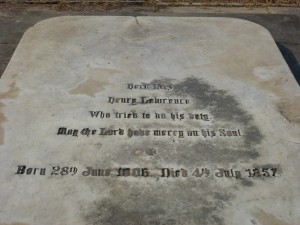 The sad grave of Sir Henry Lawrence
The sad grave of Sir Henry Lawrence
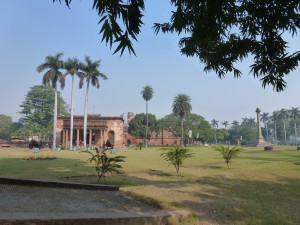 The Residency in Lucknow is preserved as close as possible to its state in 1857
The Residency in Lucknow is preserved as close as possible to its state in 1857
Other monuments were included in the tour, but perhaps more interesting and colourful was a much more active place, the dhobi ghat, or open-air laundry. Here washer-folk bring piles of dirty laundry down to the river bank, then soap the clothes in makeshift holes in the riverbank, lined with plastic sheeting, and then bodily heavy the wet garments down into the none-too-clean river, submerging themselves in the water, and proceed to beat the soap and dirt out of the clothes, uttering emotion-filled grunts and groans with the exertion!
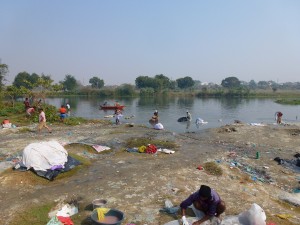 The dhobi ghat was an interesting sight!
The dhobi ghat was an interesting sight!
Our afternoon programme involved a person audience with the Nawab of Lucknow, an honour indeed. We were shown into the antique-filled drawing room of a relatively simple home, and there was His Excellency seated ready to welcome us. Our scheduled one-hour appointment extended itself spontaneously by at least another twenty minutes, while the Nawab recounted hunting tales of his youth, including a rather horrifying one for a bird-lover such as me which involved him and a couple of friends loading a cannon with lead shot, firing it at a duck-covered pool, and finally picking up around 200 victims. Luckily, sport hunting of all kinds were completely banned by Indira Gandhi in 1973, so such excesses are no longer possible, although a far greater danger to waterfowl comes from agricultural chemicals, pollution and disturbance. Rosemary was most taken by the Nawab’s bristling moustache, but having overstayed our allotted audience by such a considerable margin, we eventually dragged ourselves away, having much enjoyed meeting this colourful and charming gentleman.
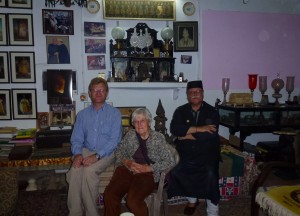 It was an honour to be granted an audience with H E The Nawab of Lucknow
It was an honour to be granted an audience with H E The Nawab of Lucknow
Our last post of call in Lucknow was the renowned La Martinière School for Boys, which is housed in a splendid nineteenth century building with enormous hollow lions on the roof, complete with eye holes. Apparently in the not too distant past, fires would be lit in these architectural features to scare away the tigers that used to enter the city and terrify the residents. The following morning, I was delighted to re-acquaint myself with an old friend from my 2006 visit, Sonu, who had come all the way to Lucknow to pick us up and personally accompany us on the long drive to the Dudhwa National Park, a place deeply associated with my grandparents (my grandfather was DFO and Conservator of Forests here at various times in the 1920s, 30s and 40s, and it was here that my father lost a tooth while playing a pile of railway sleepers in about 1933).
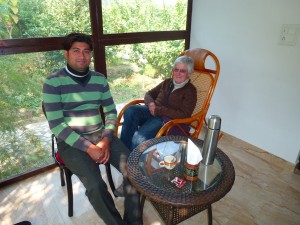 It was a pleasure to be guided by Sonu again in Dudhwa
It was a pleasure to be guided by Sonu again in Dudhwa
Rather than do the entire journey in one go, Sonu had arranged for us to visit the Kishanpur Wildlife Sanctuary, an outlying sector of the park, for one night before venturing on to the main part the following day. We checked into a pleasant wildlife camp run by the Katerniaghat Foundation, an organization dedicated to the conservation of the forests and wildlife of Uttar Pradesh. We were warmly welcomed by Suresh Chaudari, Vice-President, and Fazlur Rahman, Coordinator for the Terai Region, who is doing a long-term study of the highly endangered Bengal Florican. Our two hosts were most impressed by Rosemary, uttering the catch-phrase of this part of our journey: “Mam is VERY lively!” Early the next morning we entered the reserve itself, and shortly after climbing a watch tower, Sonu pointed urgently, and I just had time to see the four paws of a tiger pacing along the track, the rest of the animal completely obscured by a leafy branch. I rushed back down the rickety steps, and was able to watch the tiger as it walked away into the mist. Kishanpur would have been a heaven for the Nawab in his younger day – a cannon fired out over the water would have blasted many hundreds of waterfowl, not to mention a good few Swamp Deer and a number of Muggers, or Marsh Crocodiles. This is one of the great strongholds of the Swamp Deer, otherwise known as Barasingha or Gond, and the males look extraordinary with their antlers draped with aquatic vegetation. Perhaps one of the highlights among the large numbers of waterbirds was the large number of Red-crested Pochard and Ferruginous Duck, the latter in particular being a none-too-common species. Just looking out over this peaceful lake in itself is a delight, and it was a pleasure to have the entire place to ourselves, although later the Minister of Forests for UP appeared with his entourage.
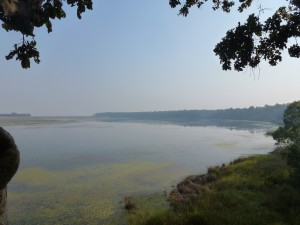 The Nawab's cannon would have claimed many avian victims here at Kishanpur
The Nawab's cannon would have claimed many avian victims here at Kishanpur
In the afternoon we took the short drive to the main headquarters of the Dudhwa National Park, where we checked into some slightly dingy accommodation for one night, and it was here that Rosemary succumbed to the almost inevitable stomach upsets, and retreated to bed. Little did I realize that my days were numbered on this account too. Luckily I was still healthy the following morning, and I had the pleasure of an elephant ride in the rhino sanctuary. This is a 32 square kilometre fenced area into which a small number of Rhinos were introduced some years ago. Numbers have now reached 32 individuals – the fencing being for the Rhinos’ own protection as it is far easier to keep track of them and protect them from the ravages of the infamous poachers who will stop at virtually nothing to get their hands on Rhino horn for the lucrative Chinese medicine market. There has been no recent case of poaching here, so the authorities deserve every congratulation.
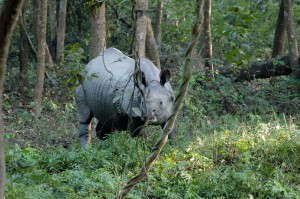 Rhinos in Dudhwa have increased from 22 in 2006 to 32 now
Rhinos in Dudhwa have increased from 22 in 2006 to 32 now
Later that day, we made the short journey to Satiana Forest Rest House, and settled ourselves in for a three-day stay. Early morning safaris in the completely open Maruti Suzuki Gypsy vehicles that are now the mainstay of wildlife watching in Indian national parks are remarkably cold, but Sonu had everything well prepared, and Rosemary received the “red blanket treatment”, and was well wrapped up against the damp, clammy cold that seems to hang over the extensive grasslands.
As usual all too soon our Dudhwa sojourn drew to a close, as did my health, and the morning of our departure was not one I hope to repeat in the near future! The toilet was extremely necessary, although even it did not solve all problems as both ends were affected simultaneously. The worst of it was that we then had the seven-hour drive to Corbett ahead of us, and there is little worse than bouncing around on India’s uneven roads, constantly braking, hooting and swerving along, when the body is under duress! Luckily, despite groaning for much of the journey, I made it intact, and we checked into the very pleasant Corbett Tiger Camp resort, where one night of semi-comfort was most welcome before the next stage of our Great Indian Adventure was due to begin.



